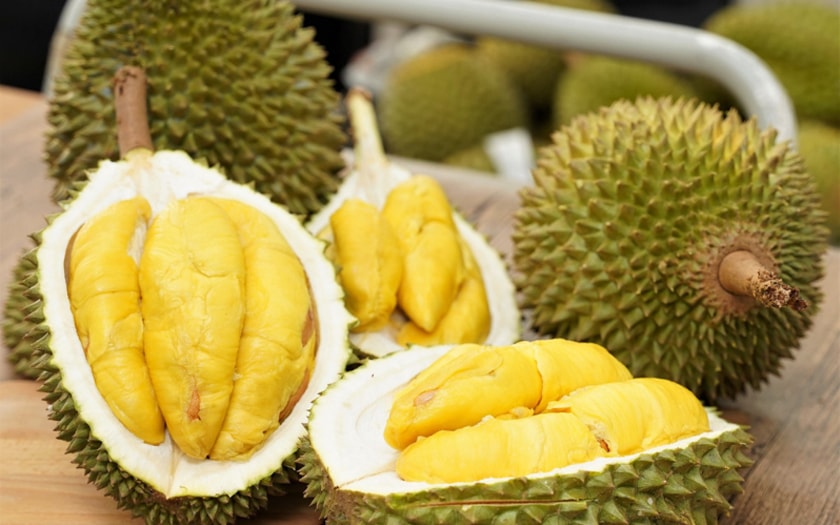Durian is not only famous for its characteristic aroma but also for its rich, sweet taste. Durian soaked in chemicals not only reduces its flavor but also poses a potential health risk.

There are many durians on the market today that are harvested when they are still green and are ripened with chemicals. This type of durian soaked in chemicals not only reduces the flavor but also poses a potential risk to health. Below are some ways you can refer to distinguish tree-ripened durians from durian soaked in chemicals to ripen them.
One of the simplest and most effective ways to distinguish between tree-ripened and chemically-soaked durian is to look at the fruit stem.
Ripe durian with stems that are still fresh, green, and feel firm and hard to the touch. The shell near the stem may have slight cracks due to the durian segments expanding inside.
Durians soaked in chemicals often have wilted stems, turning brown or yellow. Because they are cut early, the stems often dry out faster. Some fruits also show signs of softening or wrinkling at the stem.
The scent is the most recognizable feature to distinguish between tree-ripened and chemically-dipped durian. Tree-ripened durian has a characteristic, sweet, and fragrant scent that spreads from afar. The closer you get, the stronger the scent becomes, sweeter and richer. Chemically-dipped durian has no scent, an indistinct scent, or a strong, pungent, and artificial smell.
If you smell the bottom of the fruit (where there are no thorns) and do not sense a distinctive aroma, it is likely that the durian is not truly ripe.
Ripe durians often burst open slightly, with cracks between the segments starting to become visible. The skin may be slightly yellow, and overall it looks “softer” than green durians.
Soaked durian has hard, sharp and closed thorns. The skin is usually dark green, with no signs of cracking or opening.
In addition, when tapping the fruit lightly with your hand, if the sound is “pop pop”, deep and warm, then it is a naturally ripe durian. If the sound is loud and clear like “pop pop”, then it is usually an unripe fruit, or forced ripening.
This is the most accurate way to distinguish between durians that are ripe and those that are soaked in chemicals, but it can only be applied when you have bought them or the seller has already cut them open. With durians that are ripe, the segments are golden yellow (depending on the variety, they can be dark or light yellow), the flesh is soft, fatty, viscous and chewy. When eaten, you can feel the natural sweetness and aroma.
Durian dipped in chemicals is often tough, the flesh is loose or fibrous, tastes salty or slightly sour, and is not fatty. Sometimes the yellow segments are beautiful but when eaten, they lose all their delicious taste.
Delicious durians are usually lighter than they look. With ripe durians, because the segments have expanded, the inside is hollower, so when you pick them up, they will feel surprisingly light. On the contrary, durians soaked in chemicals due to early harvest, the segments have not fully developed, so they feel heavier, and the inside is usually less.
Tree-ripened durians are often more expensive due to the natural ripening process and are more difficult to preserve. If you come across a surprisingly cheap durian, especially in the off-season, be wary.
You should prioritize choosing durian from reputable regions such as Cai Lay (Tien Giang), Dak Lak, or brands that clearly state the origin and cultivation process.
To buy delicious durian, you should:
- Buy at reputable stores, can try on the spot.
- Prioritize durian with stems cut close to the sale date.
- Avoid buying durian that has been separated and left out in the air for a long time, it can easily lose its flavor or spoil.
TB (summary)